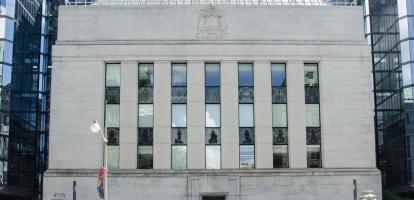Wednesday’s inflation report from Statistics Canada showed October’s consumer price index up 4.7 per cent from a year earlier. We are still hearing about “transitory” inflation from many forecasters and central bankers. Canadians dismayed by recent higher prices for food, energy, appliances and much else should not take much reassurance from this term.
Many transitory events – storms, pandemics, recessions – leave lasting effects. With the benefit of hindsight, the inflation from the mid-1960s to the early 1990s was transitory. It came and went. Two-per-cent inflation was common until 1965 and became an official Bank of Canada target after 1995. But between those two dates, the consumer price index more than quintupled. The purchasing power of anything measured in dollars – cash, a mortgage, or an annuity – in 1965 had fallen to less than 20 cents on the dollar 30 years later.
The current episode may not be as bad or last as long. But like past bouts of inflation, it is eroding the value of our money. The purchasing power lost between 1965 and 1995 never came back. Neither will the purchasing power that inflation above 2 per cent is costing us now. We need a fresh commitment from the federal government and the Bank of Canada to limit the damage by reaffirming our 2-per-cent inflation target, and making sure we hit it.
Before COVID-19 triggered massive stimulus from governments and central banks, and pandemic-crippled supply began struggling to meet burgeoning demand, inflation had been so low for so long that Canadians could largely ignore it. When the overall level of prices was rising only 2 per cent annually, a higher price for one item got mostly offset by a lower price for another. The price of something in short supply would rise, and when the squeeze ended, it would fall again.
For that reason, talk of “transitory” inflation can sound like a prediction that the dismaying numbers we see at the supermarket, the gas station or the appliance store will soon subside. When inflation is high, however, that is not what happens. In a given month, Statistics Canada’s CPI release might highlight higher costs for food and energy; the month after, it might be clothing and transportation. But those changes occur against a backdrop of relentlessly rising prices in general. The value of our money goes relentlessly down.
This is new for many Canadians. Between the end of 1995, when the Bank of Canada’s inflation target became 2 per cent, and the onset of COVID-19, the bank hit its target remarkably well. The annualized increase in the CPI over those 25 years was 1.9 per cent, and the year-over-year increase in the CPI that makes headlines every month was inside the bank’s 1-per-cent to 3-per-cent target band more than 80 per cent of the time. Only once did year-over-year increases in the CPI top 3 per cent for six consecutive months.
With October’s release, we surpassed that mark. And the dubious record-setting is far from over. In its October Monetary Policy Report, the Bank of Canada’s projections showed year-over-year increases in the CPI above 3 per cent until next June. And although those projections show inflation returning to 2 per cent by the end of 2024, it is possible – October’s number makes it seem more likely – that year-over-year increases in the CPI will be above 2 per cent until then. Four years of above-target inflation is far longer than any comparable episode since 1995. And to repeat, the purchasing power that this above-target inflation takes away from Canadians who hold cash, receive payments or make loans in dollars will not come back. It is gone forever.
The good news is that we can hold the line there. We know the Bank of Canada can achieve low and stable inflation – it has done it before. The bank has stopped its pandemic-related program of buying federal debt. It has signalled readiness to raise its overnight interest rate to more normal levels sooner than most forecasters expected. What we need now is a sign that the federal government is on board and that the bank will continue to have the mandate and authority to contain inflation, and that the current unheralded erosion in the value of our money – an erosion that will not be transitory, but permanent – comes to an end.
William Robson is Chief Executive Officer at the C.D. Howe Institute.





